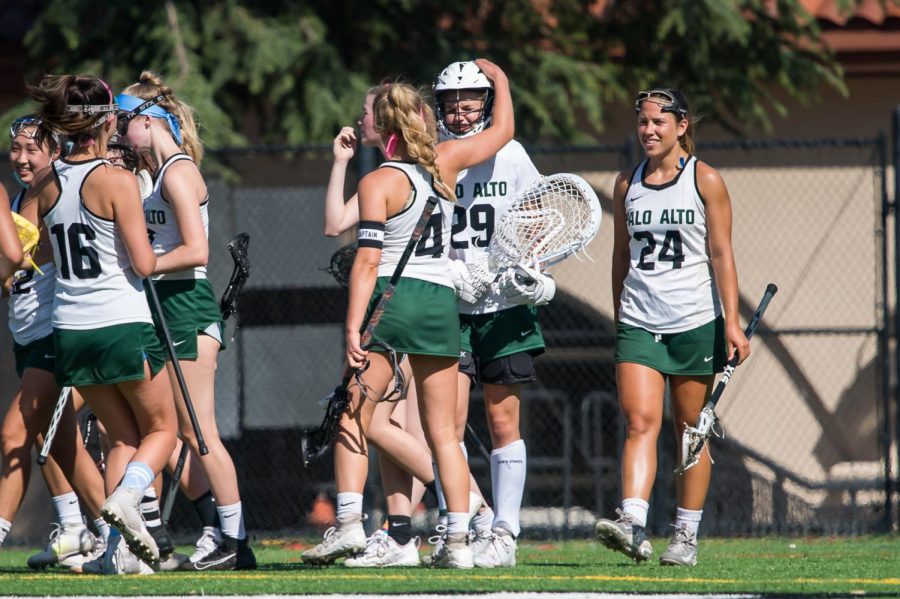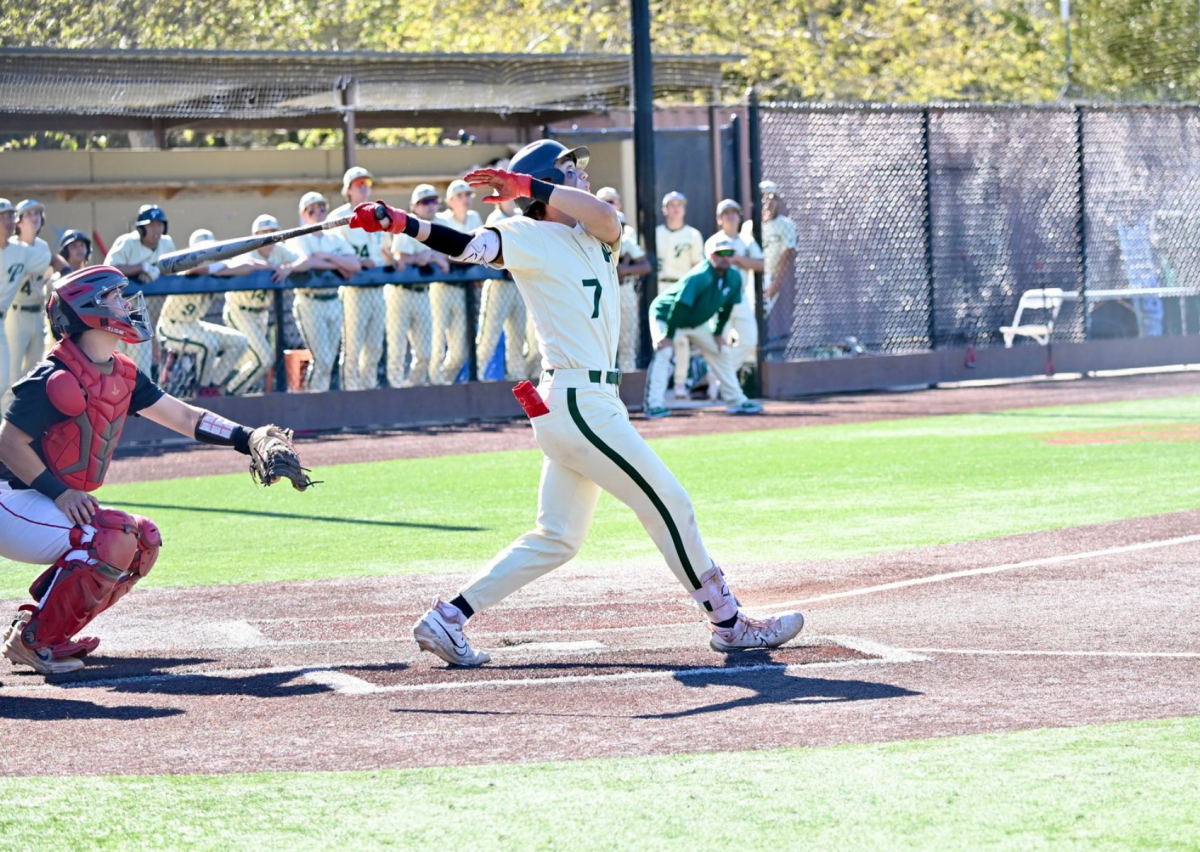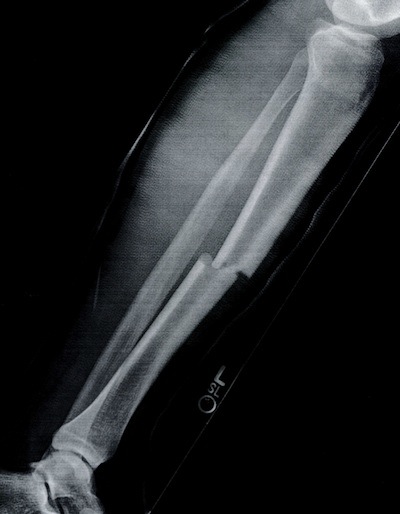Ben Macias (‘12) walked up in the back field, preparing to stop any ball carrier coming his direction. After the ball snapped and the play began, his knee smashed into his opponent, forcing him to fall to the ground. The weight of his 200-pound opponent collapsed on top of him. Macias’s foot stayed rooted to the turf while his knee continued to twist, tearing his anterior cruciate ligament, more commonly known as the ACL.
“It was the most painful [thing I’ve ever felt],” Macias said.
This injury alone would have cost Macias nine months, forcing him to sit out for the rest of his sophomore season. However, the injury time was extended when his doctor found that Macias’ ligament had reattached incorrectly and had gradually re-torn on its own.
Once again, Macias needed reconstruction surgery. He missed his junior year football season, a crucial time for college recruiting. After sitting out for a total of a year and a half, Macias finally got permission to play. In the spring of his junior year, he tried out for the lacrosse team. However, during tryouts, a lacrosse ball hit Macias, making him lose his balance. His knee gave out, and he tore his ACL for the third time.
After three ACL reconstruction surgeries, Macias had to sit out nearly two years.
Career ending injuries in sports are common across the country. According to Lucille Packard Children’s Hospital at Stanford 3.5 million children throughout the country are injured participating in organized sports each year.
Stanford trained psychiatrist Zaakir Yoonas has found a connection to these sports injuries with depression, which he expressed in his blog.
“[The] structure, organization and discipline in playing competitive sports; it provides one with a sense of purpose and belonging,” Yoonas wrote. “For someone who comes to be the sport and knows little outside of it, the sudden lack of structure can be deflating.”
Lacrosse and soccer player Kris Hoglund (‘12) also faced a severe injury that prevented him from participating in what he loved most; Sports. He was primarily a lacrosse player and a member of the soccer team for fun. Hoglund was the goalie, although he had no previous experience at the position.
On Jan. 6 2011, Hoglund broke his shin bone while playing goalie in a soccer game.
“He went down to get a ball and another player came in to his knee, right through his shin guard, and cracked his tibia completely in half,” Hoglund’s mom Ellen Kritzberg said.
After the painful break, Hoglund was expected to sit out the rest of the soccer season and the first half of the lacrosse season for a total recovery time of nine months. However, three and a half months into his recovery time, Hoglund’s shin appeared to have set incorrectly. His doctors had to forcibly re-break his shin and perform surgery for it to heal correctly.
After leading his lacrosse team to a league championship the year prior with 58 goals and 35 assists, Hoglund struggled to watch his teammates throughout the 2011 season from the sidelines.
“I had to watch my team lose a few really close one-goal games and just not being there on the field and able to help them was really hard,” Hoglund said.
Hoglund no longer had a schedule packed with lacrosse and soccer practices everyday of the week. Instead, he went home everyday knowing he would have nothing to do but study. Being immobile with hours to work on his homework every night, Hoglund found it challenging to concentrate.
“I just had to work harder on my academics [because] I didn’t have
that effort to put in athletics anymore,” Hoglund said.
The injury changed his life completely.
“As I went through the recovery process I realized how awful and hard it was to [be injured for so long],” Hoglund said “[Being injured] made the really simple things you don’t think about really difficult.”
Varsity soccer player Mira Ahmad (‘12) suffered three severe concussions, forcing her to be sidelined on and off for the last year and a half. Her third concussion ended her soccer career completely.
Ahmad’s first concussion left her unconscious for thirty seconds. She was shoved in the back of her head while taking a shot, and her head was slammed to the ground. After a six month rest, Ahmad came back to soccer only to suffer an even more severe concussion, leaving her unconscious for two minutes and was immediately hospitalized.
Due to short-term memory loss from her concussions she does not remember being in the hospital. Ahmad suffered constant ringing in her ears and endless headaches for weeks following her concussions. She struggled to concentrate in class for long periods of time, making school much more challenging.
Despite the physical aspects of an injury, pains, what Ahmad dreaded most was the transition to a soccer-free life.
“It’s very confusing [and upsetting] when something that’s been such a big part of your life is suddenly taken away from you,” Ahmad said.
As a senior Ahmad has been practicing with the girls’ varsity soccer team, but her doctors and parents are preventing her from ever competing on the field again.
“All of it has been [hard], but playing high school soccer knowing I’m not actually playing high school soccer [games, and] being so close to [playing] has been the hardest,” Ahmad said.
By the time Hoglund was able to play, his shin had not only cost him almost a year without lacrosse, but also many recruiting opportunities. Although the entire process was devastating for Hoglund he tried to maintain a positive attitude and see how he could pursue college lacrosse.
“He never gave up,”Kritzberg said, “He figured out different ways to accomplish his goals [and] he always looked at the positive side and couldn’t wait to get back and play.”
Because Hoglund still wants to partake in his childhood dream of playing lacrosse at the collegiate level, he chose to focus on his academics while he was injured. This way once when he got into a school for academics he could talk to the lacrosse coach about possibly walking on to the team.
“I was looking to play lacrosse in college,” Hoglund says “I’ve always been playing sports and I would feel lost without [them].”
Two years after his initial injury Macias’ lifestyle and goals are nothing like he would have imagined as a sophomore radiating potential.
Senior starting runningback Dre Hill (‘12) understands the affect of losing Macias.
“He played with all of his heart [and] when we lost him we needed to find someone to fill his shoes,” Hill said. “But, we couldn’t really find anybody [because] he was such a great player.”
As a senior he is not a captain, starter, or leader of the team as he had hoped before his injury.
“[Before my injury] I thought football was going to take me somewhere, but now it can’t because the coaches don’t give me a chance,” Macias said. “[And now I] do a lot more [troubling] stuff that I shouldn’t be doing.”
Due to his injury Macias feels that his chances to play Division 1 football right after high school have evaporated.
“Now I’m a senior and its already too late,” he said.
Although Macias no longer plays for the Palo Alto Football team anymore, he plans to continue to play in the future. Next year Macias will play in Junior College in hope to be recruited to Div. 1 football schools from there.
“If I’m gonna risk tearing my leg again it’s going to be actually playing football, and not being a practice dummy,” Macias said.
Unfortunately, Ahmad played in her last soccer game almost a year ago and she has now given up hope to ever play soccer at a competitive level again.
Rebuilding a tough mentality can often be the hardest transition back into a competitive athletic environment.
“The mental aspect is the hardest part,” Paly trainer Josh Goldstein said. “There’s still that mental block that says ‘wait, I got hurt doing this so I’m going to protect myself.’ You got to get over that in order to perform your sport to its highest level.”
Although sports can be everything for high school athletes, tragic injuries like these put them into perspective.
“Breaking my leg has shown me that athletics can be taken away at any
time,” Hoglund said. “You have to enjoy where you are even if you don’t have that.”






